A Single Motor-Driven Focusing Mechanism with Flexure Hinges for Small Satellite Optical Systems
Abstract
Featured Application
Abstract
1. Introduction
2. Materials and Methods
2.1. Definition of Mis-Alignments of the Schmidt-Cassegrain Optical System
Approximation of MTF Performance
2.2. Requirements for a Novel Focusing Mechanism
2.3. Concept Design and Working Principle of SMFH
- Once the motor screw that connects the motor shaft rotates CW, it advances the linear screw, enabling the movement of the x-axis (−).
- The rotation body attached to the end of the linear screw rotates CW.
- A roller that is mounted at the tip of the rotation body positively displaces the secondary mirror along the z-axis (+), where it contacts the secondary mirror supporter.
- The three flexure hinges are elongated along the +z-axis, and then it generates the De-spacewith a restoring force.
- The motor rotates CCW, and then steps 1 to 4 repeat in the opposite direction/order. This process causes the secondary mirror to negatively displace in the z-axis (−).
2.4. Design of Flexure Hinge (FlexHe)
2.4.1. FEM Modeling of the FlexHe
2.4.2. Experimental Investigation for the FlexHe
2.5. Fabrication of SMFH and Experimental Setups
3. Experimental Results
4. Conclusion and Discussion
5. Patents
Supplementary Materials
Author Contributions
Funding
Acknowledgments
Conflicts of Interest
References
- Kramer, H.J.; Cracknell, A.P. An overview of small satellites in remote sensing. Int. J. Remote Sens. 2008, 29, 4285–4337. [Google Scholar] [CrossRef]
- Emerging Opportunities for Low-Cost Small Satellites in Civil and Commercial Space. Available online: https://digitalcommons.usu.edu/smallsat/2010/all2010/28/ (accessed on 11 October 2020).
- Xue, Y.; Li, Y.; Guang, J.; Zhang, X.; Guo, J. Small satellite remote sensing and applications—History, current and future. Int. J. Remote Sens. 2008, 29, 4339–4372. [Google Scholar] [CrossRef]
- Sweeting, M. Modern small satellites-changing the economics of space. Proc. IEEE 2018, 106, 343–361. [Google Scholar] [CrossRef]
- Clements, R.; Tavares, P.; Lima, P. Small satellite attitude control based on a Kalman filter. In Proceedings of the 2000 IEEE International Symposium on Intelligent Control. Held jointly with the 8th IEEE Mediterranean Conference on Control and Automation (Cat. No. 00CH37147), Rio Patras, Greece, 19 July 2000; pp. 79–84. [Google Scholar]
- Radhakrishnan, R.; Edmonson, W.W.; Afghah, F.; Rodriguez-Osorio, R.M.; Pinto, F.; Burleigh, S.C. Survey of inter-satellite communication for small satellite systems: Physical layer to network layer view. IEEE Commun. Surv. Tutor. 2016, 18, 2442–2473. [Google Scholar] [CrossRef]
- Lascombes, P. Electric propulsion for small satellites orbit control and deorbiting: The example of a Hall Effect thruster. In Proceedings of the 2018 SpaceOps Conference, Marseille, France, 28 May–1 June 2018; p. 2729. [Google Scholar]
- Neel, N.C., III; Cotten, D.L.; Mishra, D.R. The Spectral Ocean Color (SPOC) Small Satellite Mission: Developing an Adjustable Multispectral Imager. AGUFM 2018, 2018, ED43G-1295. [Google Scholar]
- Gopalswamy, N.; Gong, Q. A small satellite mission for solar coronagraphy. In Proceedings of the CubeSats and NanoSats for Remote Sensing II, San Diego, CA, USA, 19–23 August 2018; p. 107690X. [Google Scholar]
- Fajardo, I.; Lidtke, A.A.; Bendoukha, S.A.; Gonzalez-Llorente, J.; Rodríguez, R.; Morales, R.; Faizullin, D.; Matsuoka, M.; Urakami, N.; Kawauchi, R. Design, Implementation, and Operation of a Small Satellite Mission to Explore the Space Weather Effects in Leo. Aerospace 2019, 6, 108. [Google Scholar] [CrossRef]
- Shakir, A.B.; Ez-Deen, S.Y. Effect of acoustic vibration on the satellite structure at launch stage. In Proceedings of the International Conference on Modeling and Simulation (MS09) Trivandrum, Kerala, India, 1–3 December 2009; p. 3. [Google Scholar]
- Lee, D.-O.; Han, J.-H.; Jang, H.-W.; Woo, S.-H.; Kim, K.-W. Shock response prediction of a low altitude earth observation satellite during launch vehicle separation. Int. J. Aeronaut. Space Sci. 2010, 11, 49–57. [Google Scholar] [CrossRef]
- Johnson, C.; Wilke, P. Protecting satellites from the dynamics of the launch environment. In Proceedings of the AIAA Space 2003 Conference & Exposition, Long Beach, CA, USA, 23–25 September 2003; p. 6266. [Google Scholar]
- Neudeck, P.G.; Prokop, N.F.; Greer III, L.C.; Chen, L.Y.; Krasowski, M.J. Low earth orbit space environment testing of extreme temperature 6H-SiC JFETs on the international space station. Mater. Sci. Forum 2011, 679–680, 579–582. [Google Scholar] [CrossRef]
- Jiao, Z.; Jiang, L.; Sun, J.; Huang, J.; Zhu, Y. Outgassing environment of spacecraft: An overview. In Proceedings of the IOP Conference Series: Materials Science and Engineering, Wuhan, China, 19–21 July 2019; p. 012071. [Google Scholar]
- Shimamura, H.; Yamagata, I. Degradation of mechanical properties of polyimide film exposed to space environment. J. Spacecr. Rockets 2009, 46, 15–21. [Google Scholar] [CrossRef]
- Darrin, M.A.G.; Buchner, S.P.; Martin, M. The Impact of the Space Radiation Environment on Micro Electro Mechanical Systems (MEMS) and Microstructures. In Proceedings of the 2005 8th European Conference on Radiation and Its Effects on Components and Systems, Cap d’Agde, France, 19–23 September 2005; pp. H1-1–H1-5. [Google Scholar]
- Outgassing Data for Selecting Spacecraft Materials. Available online: https://ntrs.nasa.gov/citations/20030053424 (accessed on 11 October 2020).
- Schläppi, B.; Altwegg, K.; Balsiger, H.; Hässig, M.; Jäckel, A.; Wurz, P.; Fiethe, B.; Rubin, M.; Fuselier, S.; Berthelier, J.-J. Influence of spacecraft outgassing on the exploration of tenuous atmospheres with in situ mass spectrometry. J. Geophys. Res. Space Phys. 2010, 115, A12312. [Google Scholar] [CrossRef]
- Kim, H.-I.; Yoon, J.-S.; Kim, H.-B.; Han, J.-H. Measurement of the thermal expansion of space structures using fiber Bragg grating sensors and displacement measuring interferometers. Meas. Sci. Technol. 2010, 21, 085704. [Google Scholar] [CrossRef]
- Lee, S.; Shin, D. On-orbit camera mis-alignment estimation framework and its application to earth observation satellite. Remote Sens. 2015, 7, 3320–3346. [Google Scholar] [CrossRef]
- Murthy, K.; Shearn, M.; Smiley, B.D.; Chau, A.H.; Levine, J.; Robinson, M.D. SkySat-1: Very high-resolution imagery from a small satellite. In Proceedings of the Sensors, Systems, and Next-Generation Satellites XVIII, Amsterdam, The Netherlands, 22–25 September 2014; p. 92411E. [Google Scholar]
- Hwang, H.; Choi, Y.-W.; Kwak, S.; Kim, M.; Park, W. MTF assessment of high resolution satellite images using ISO 12233 slanted-edge method. In Proceedings of the Image and Signal Processing for Remote Sensing XIV, Cardiff, UK, 15–18 September 2008; p. 710905. [Google Scholar]
- Gooding, D.; Richardson, G.; Haslehurst, A.; Smith, D.; Saunders, C.; Aglietti, G.; Blows, R.; Shore, J.; Hampson, K.; Booth, M. A novel deployable telescope to facilitate a low-cost <1m GSD video rapid-revisit small satellite constellation. In Proceedings of the International Conference on Space Optics—ICSO 2018, Chania, Greece, 9–12 October 2018; p. 1118009. [Google Scholar]
- Faran, S.; Eshet, I.; Yehezkel, N.; Molcho, J. Estimation of the MTF of a satellite imaging-system from celestial scenes. In Proceedings of the 2009 IEEE International Geoscience and Remote Sensing Symposium, Cape Town, South Africa, 12–17 July 2009; pp. II-452–II-455. [Google Scholar]
- Li, X.; Jiang, X.; Zhou, C.; Gao, C.; Xi, X. An analysis of the knife-edge method for on-orbit MTF estimation of optical sensors. Int. J. Remote Sens. 2010, 31, 4995–5010. [Google Scholar] [CrossRef]
- Cardei, V.; Fowler, B.; Kavusi, S.; Phillips, J. MTF Measurements of Wide Field of View Cameras. Electron. Imaging 2016, 2016, 1–5. [Google Scholar] [CrossRef]
- Choi, Y.-W.; Yang, S.-U.; Kang, M.-S.; Kim, E.-E. Development of high-performance optical system for small satellites. In Proceedings of the Earth Observing Systems XII, San Diego, CA, USA, 16–30 August 2007; p. 66771A. [Google Scholar]
- Cho, D.-H.; Choi, W.-S.; Kim, M.-K.; Kim, J.-H.; Sim, E.; Kim, H.-D. High-Resolution Image and Video CubeSat (HiREV): Development of Space Technology Test Platform Using a Low-Cost CubeSat Platform. Int. J. Aerosp. Eng. 2019, 2019, 8916416. [Google Scholar] [CrossRef]
- Asadnezhad, M.; Eslamimajd, A.; Hajghassem, H. Optical system design of star sensor and stray light analysis. J. Eur. Opt. Soc.-Rapid Publ. 2018, 14, 9. [Google Scholar] [CrossRef]
- Lee, S.-Y.; Kim, G.; Lee, Y.-S.; Kim, G.-H. Optical design and tolerance analysis of a new off-axis infrared collimator. Int. J. Precis. Eng. Manuf. 2014, 15, 1883–1888. [Google Scholar] [CrossRef]
- Franzoso, A.; D’Imporzano, R. A sub-micrometric thermal refocussing mechanism for High Resolution EO telescopes. In Proceedings of the 45th International Conference on Environmental Systems, Bellevue, WA, USA, 12–16 July 2015. [Google Scholar]
- Selımoglu, O.; Ekinci, M.; Karcı, O. Thermal refocusing method for spaceborne high-resolution optical imagers. Appl. Opt. 2016, 55, 4109–4112. [Google Scholar] [CrossRef]
- Raval, A. A detail review of optical misalignment and corrected by refocusing mechanism. Int. J. Sci. Res. Dev. 2015, 3, 778–783. [Google Scholar]
- Kuo, J.-C.; Ling, J. Optical telescope refocussing mechanism concept design on remote sensing satellite. In Proceedings of the International Conference on Space Optics—ICSO 2016, Biarritz, France, 18–21 October 2016; p. 105624F. [Google Scholar]
- Jo, J.-B.; Hwang, J.-H.; Bae, J.-S. Online refocusing algorithm for a satellite camera using stellar sources. Opt. Express 2016, 24, 5411–5422. [Google Scholar] [CrossRef]
- Lee, D.-H.; Hwang, J.-h. An Online Tilt Estimation and Compensation Algorithm for a Small Satellite Camera. Int. J. Aeronaut. Space Sci. 2018, 19, 172–182. [Google Scholar] [CrossRef]
- Kostov, A.; Friedrich, B. Predicting thermodynamic stability of crucible oxides in molten titanium and titanium alloys. Comput. Mater. Sci. 2006, 38, 374–385. [Google Scholar] [CrossRef]
- Carrion, P.E.; Shamsaei, N. Strain-based fatigue data for Ti–6Al–4V ELI under fully-reversed and mean strain loads. Data Brief 2016, 7, 12–15. [Google Scholar] [CrossRef]
- Newland, D. Buckling of double bellows expansion joints under internal pressure. J. Mech. Eng. Sci. 1964, 6, 270–277. [Google Scholar] [CrossRef]
- Kucukler, M.; Gardner, L.; Macorini, L. Flexural–torsional buckling assessment of steel beam–columns through a stiffness reduction method. Eng. Struct. 2015, 101, 662–676. [Google Scholar] [CrossRef][Green Version]

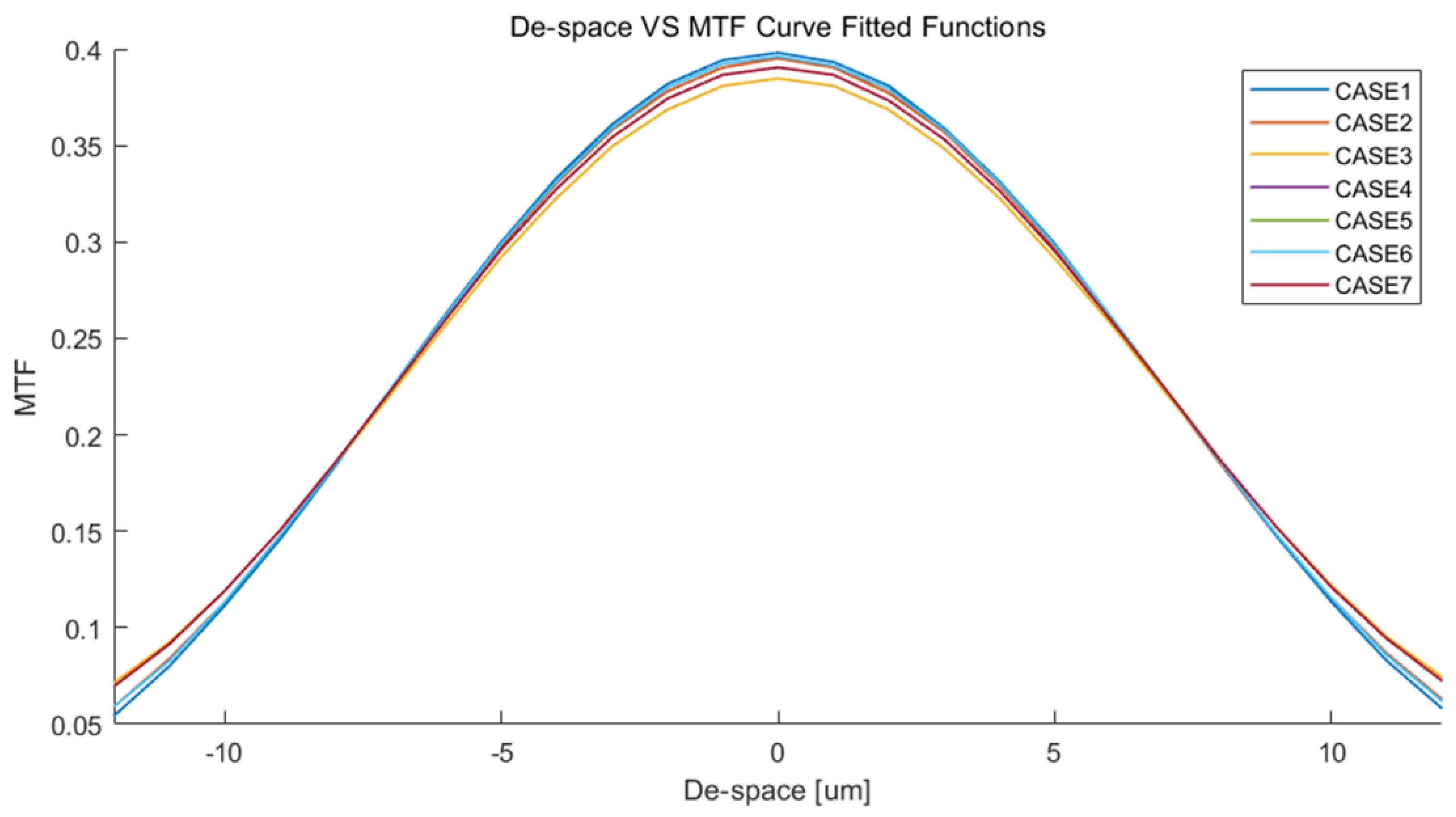
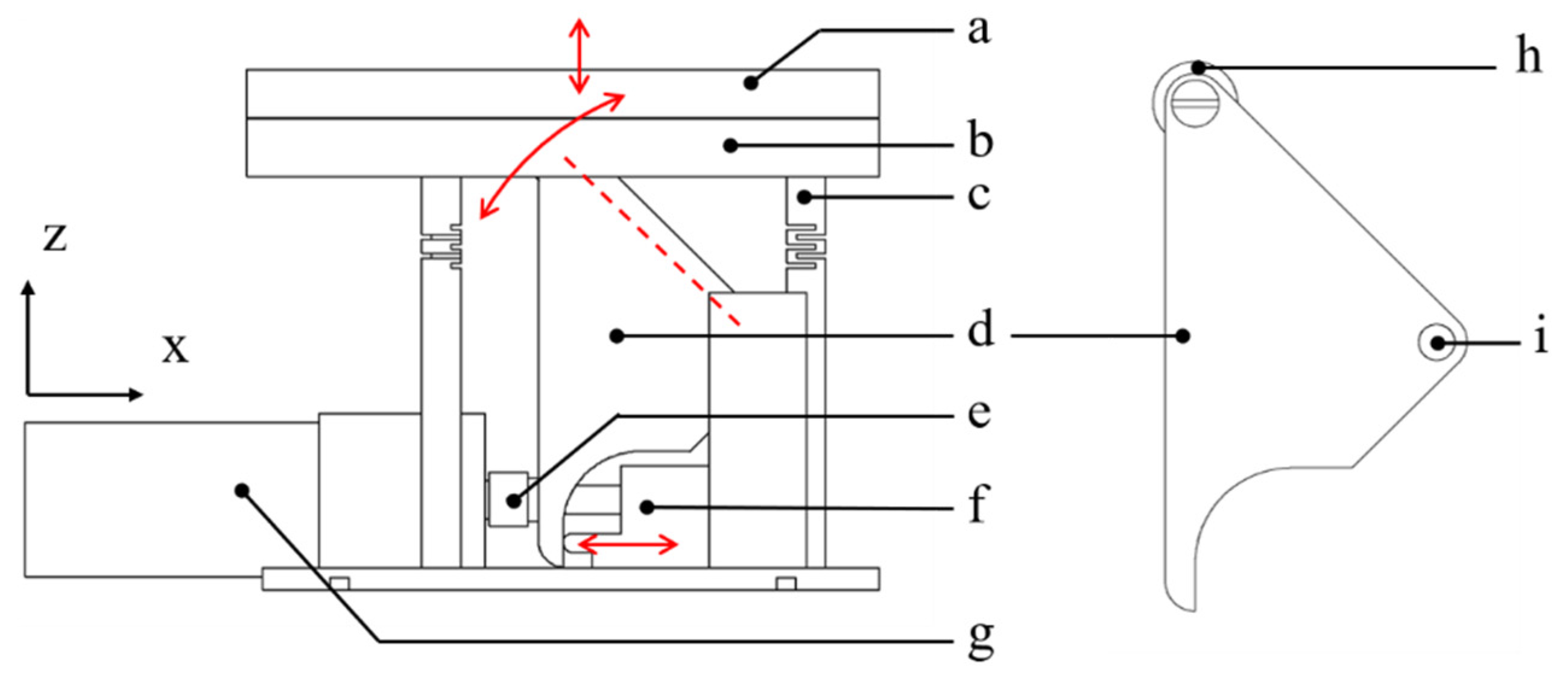
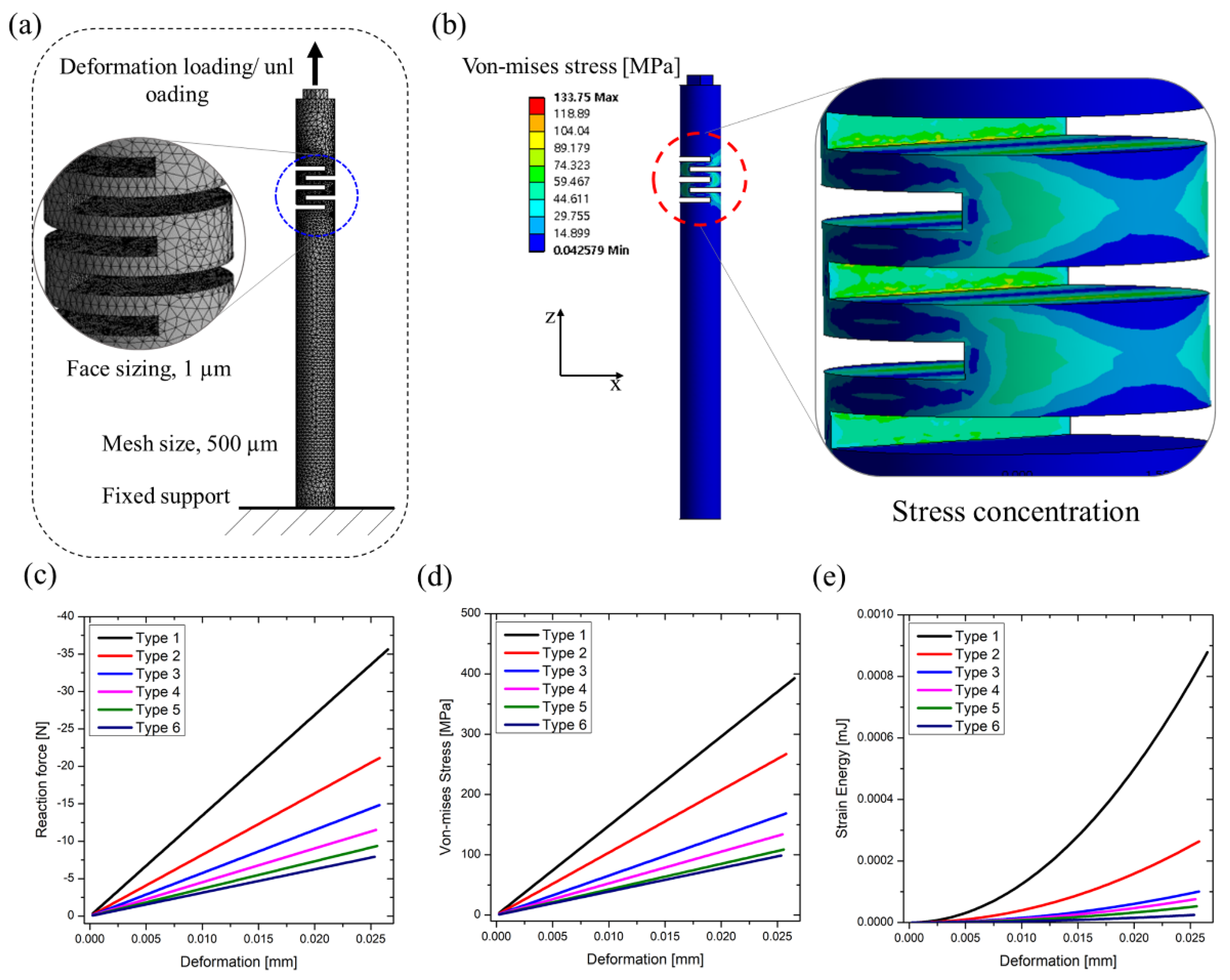
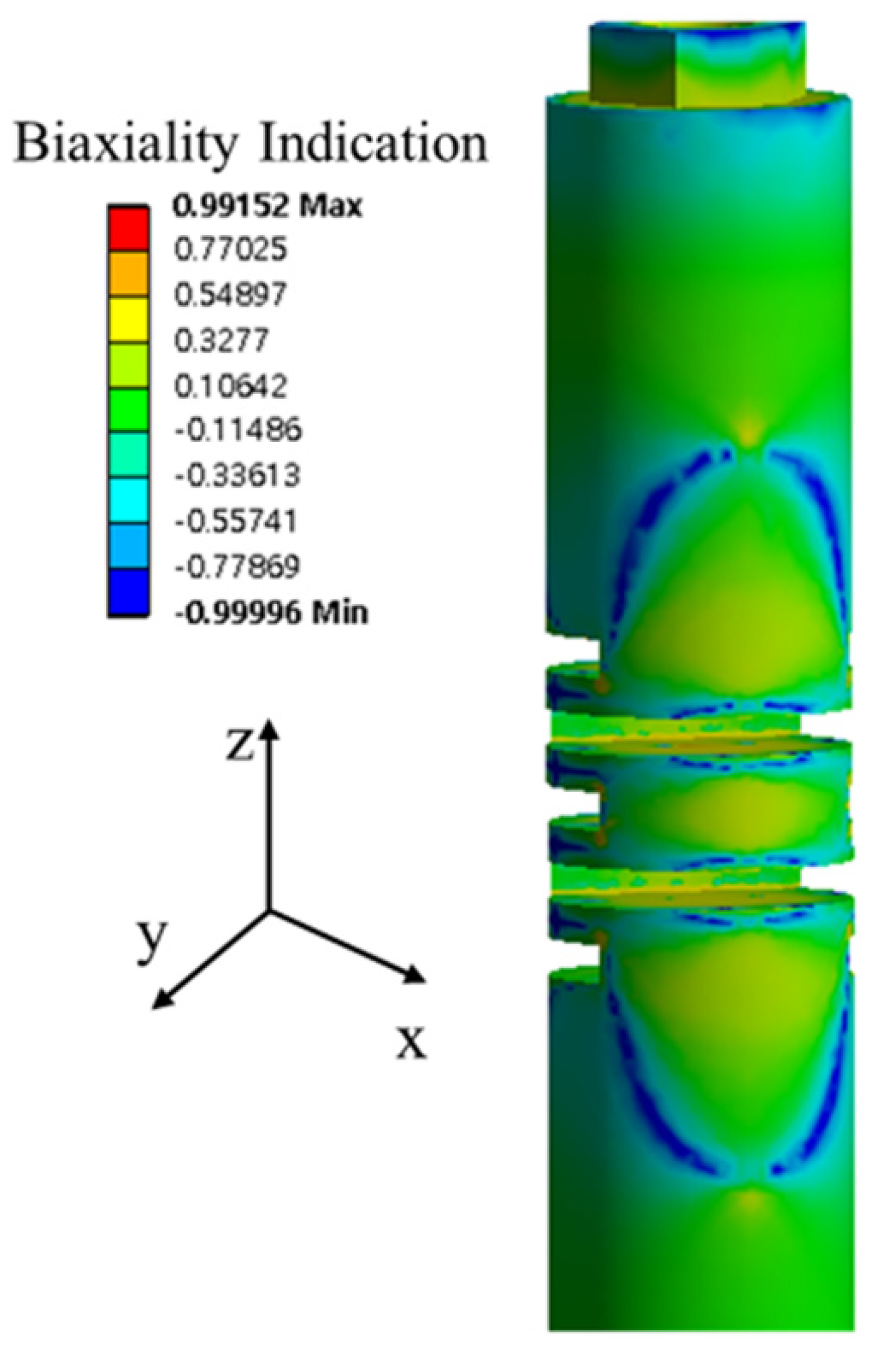
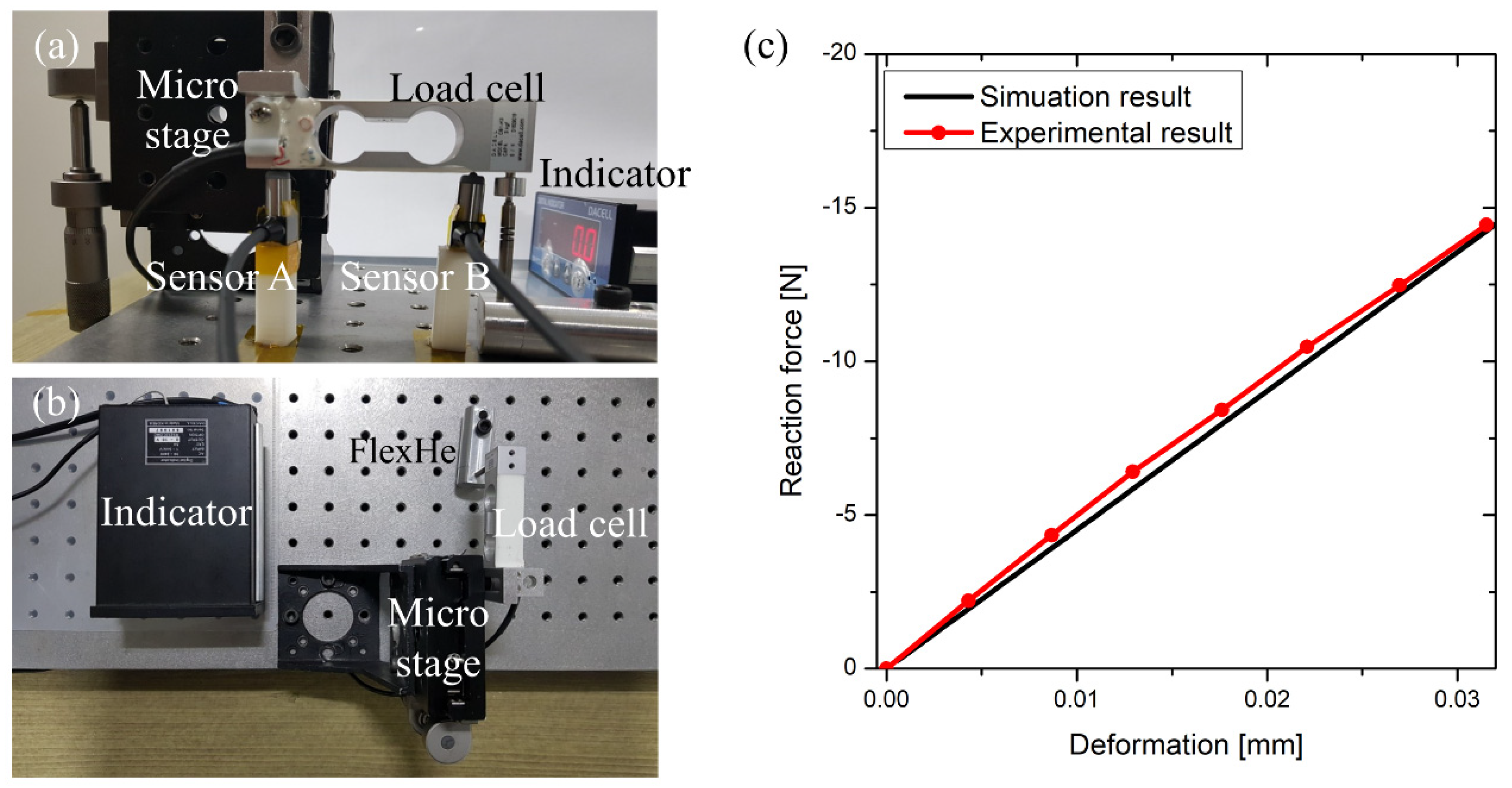

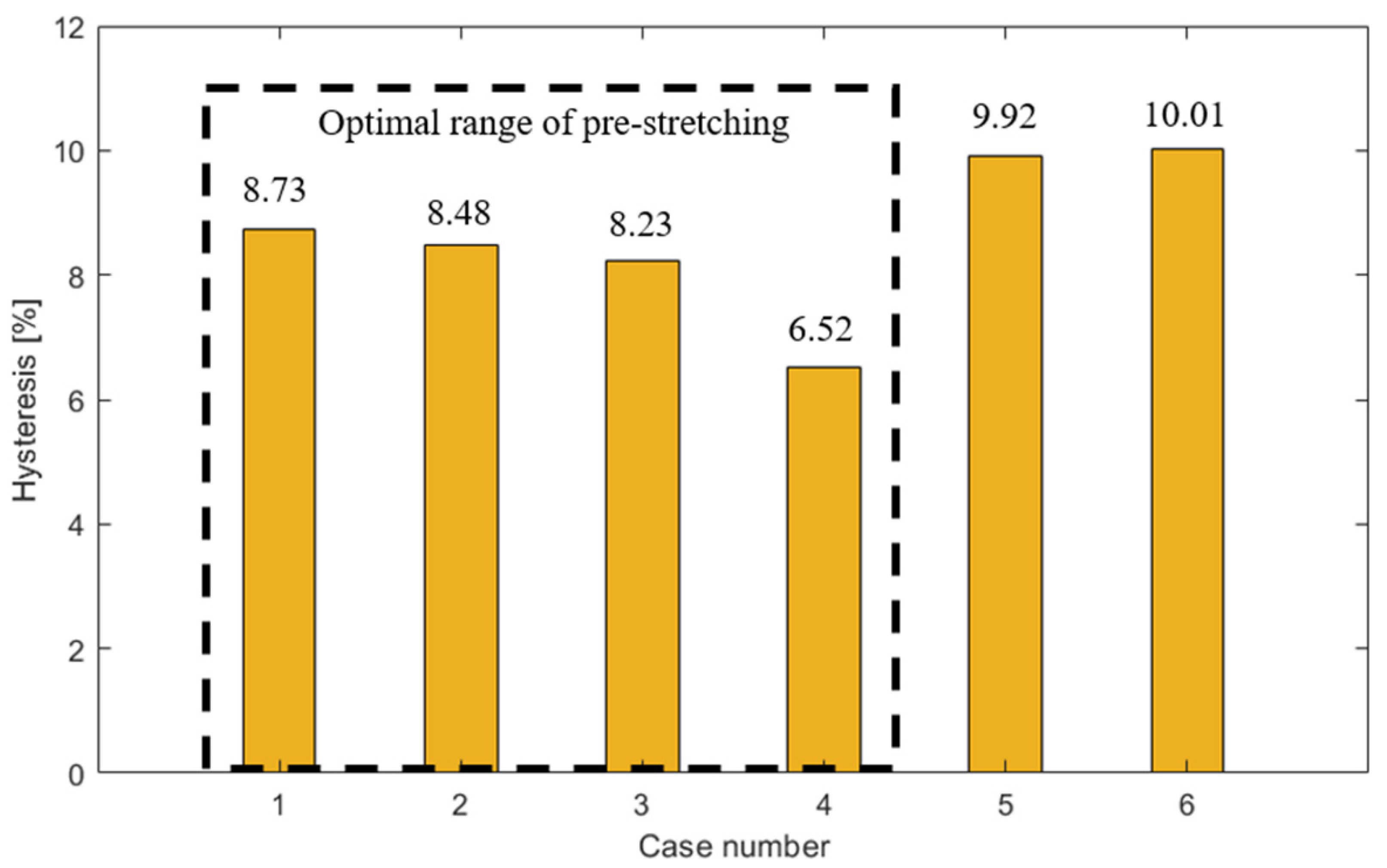
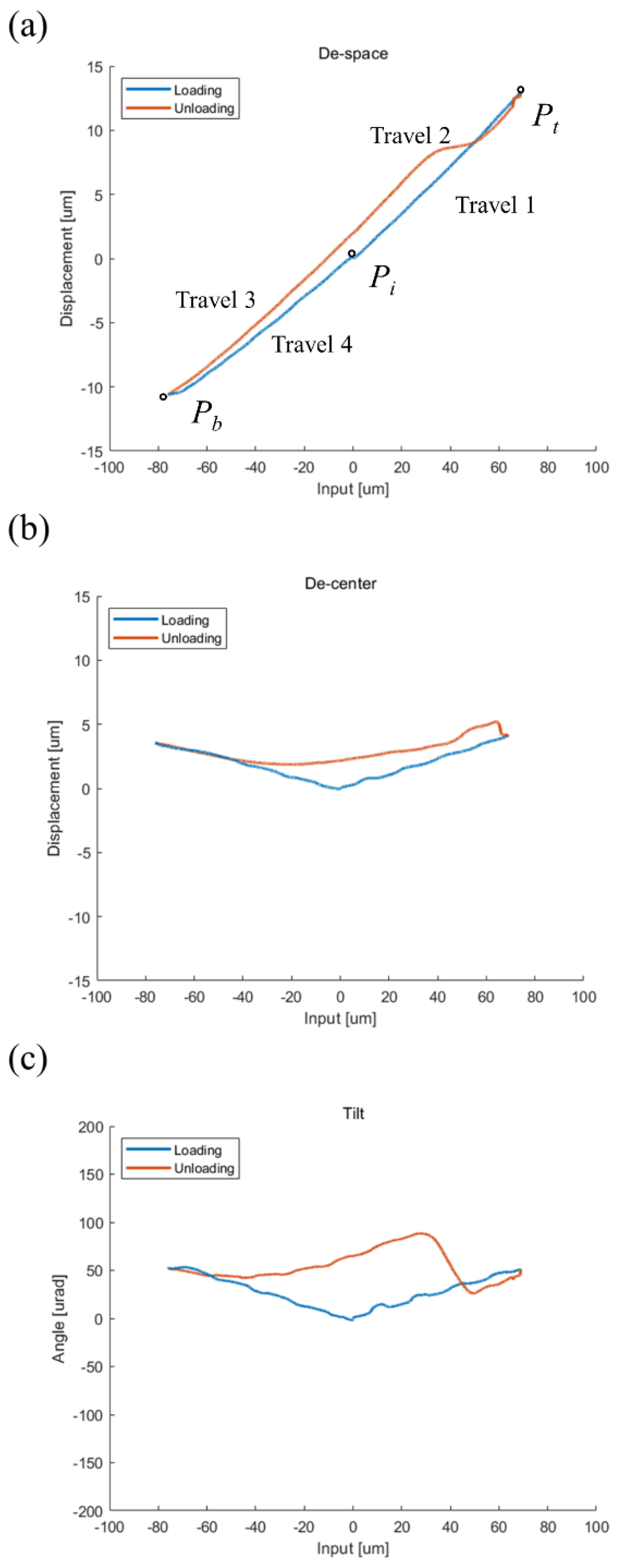
| Item | Description |
|---|---|
| Optics Type | Schmidt-Cassegrain |
| Schmidt plate diameter | 200 mm |
| Primary mirror diameter | 200 mm |
| Primary mirror curvature (radius) | 551.71 mm |
| Secondary mirror diameter | 65 mm |
| Secondary mirror curvature (radius) | 185.92 mm |
| Altitude | 685 km |
| GSD | 2.8 m |
| Detector | 35.8 × 23.8 mm CMOS sensor |
| Pixel size | 8.2 µm |
| Swath Width | 12 km |
| MTF | ≥30%, @Optical Design, Nyquist Freq. |
| Linear Obscuration | ≤0.35 |
| F/# | 10 |
| α-Tilt (µrad) | β-Tilt (µrad) | MTF at De-Space = 0 | |
|---|---|---|---|
| CASE 1 | 0 | 0 | 0.398 |
| CASE 2 | 100 | 100 | 0.395 |
| CASE 3 | 200 | 200 | 0.385 |
| CASE 4 | 100 | 0 | 0.396 |
| CASE 5 | 200 | 0 | 0.391 |
| CASE 6 | 0 | 100 | 0.396 |
| CASE 7 | 0 | 200 | 0.391 |
| Optical Alignment | Requirement |
|---|---|
| De-space stroke range | ±10 µm |
| Maximum De-center | 8.2 µm |
| Maximum Tilt | 200 µrad |
| Control Parameter | P | I | D |
|---|---|---|---|
| Value | 47 | 188 | 61 |
| Case | 1 | 2 | 3 | 4 | 5 | 6 |
|---|---|---|---|---|---|---|
| Pre-stretched length [µm] | 0 | 1 | 2 | 3 | 4 | 5 |
| Top point [µm] | 20 | 21 | 22 | 23 | 24 | 25 |
| Initial point [µm] | 10 | 11 | 12 | 13 | 14 | 15 |
| Bottom point [µm] | 0 | 1 | 2 | 3 | 4 | 5 |
| Maximum hysteresis [µm] | 1.94 | 1.91 | 1.84 | 1.44 | 2.26 | 2.11 |
| Full-scale output range [µm] | 22.22 | 22.56 | 22.38 | 22.15 | 22.75 | 23.66 |
| Hysteresis [%] | 8.73 | 8.48 | 8.23 | 6.52 | 9.92 | 10.01 |
| Polynomial Curve Fitting Function: A0 + A1·x + A2·x2 + A3·x3 + A4·x4 + A5·x5 | ||||||
|---|---|---|---|---|---|---|
| Parameter | A0 | A1 | A2 | A3 | A4 | A5 |
| Loading | 1.41 × 10−1 | 1.60 × 10−1 | 2.34 × 10−4 | 4.59 × 10−6 | 6.40 × 10−9 | −6.66 × 10−10 |
| Unloading | 2.26 | 1.99 × 10−1 | −5.65 × 10−5 | −2.09 × 10−5 | 8.08 × 10−8 | 2.71 × 10−9 |
© 2020 by the authors. Licensee MDPI, Basel, Switzerland. This article is an open access article distributed under the terms and conditions of the Creative Commons Attribution (CC BY) license (http://creativecommons.org/licenses/by/4.0/).
Share and Cite
Jung, J.; Sy, N.V.; Lee, D.; Joe, S.; Hwang, J.; Kim, B. A Single Motor-Driven Focusing Mechanism with Flexure Hinges for Small Satellite Optical Systems. Appl. Sci. 2020, 10, 7087. https://doi.org/10.3390/app10207087
Jung J, Sy NV, Lee D, Joe S, Hwang J, Kim B. A Single Motor-Driven Focusing Mechanism with Flexure Hinges for Small Satellite Optical Systems. Applied Sciences. 2020; 10(20):7087. https://doi.org/10.3390/app10207087
Chicago/Turabian StyleJung, Jinwon, Nguyen Van Sy, Dongkyu Lee, Seonggun Joe, Jaihyuk Hwang, and Byungkyu Kim. 2020. "A Single Motor-Driven Focusing Mechanism with Flexure Hinges for Small Satellite Optical Systems" Applied Sciences 10, no. 20: 7087. https://doi.org/10.3390/app10207087
APA StyleJung, J., Sy, N. V., Lee, D., Joe, S., Hwang, J., & Kim, B. (2020). A Single Motor-Driven Focusing Mechanism with Flexure Hinges for Small Satellite Optical Systems. Applied Sciences, 10(20), 7087. https://doi.org/10.3390/app10207087





